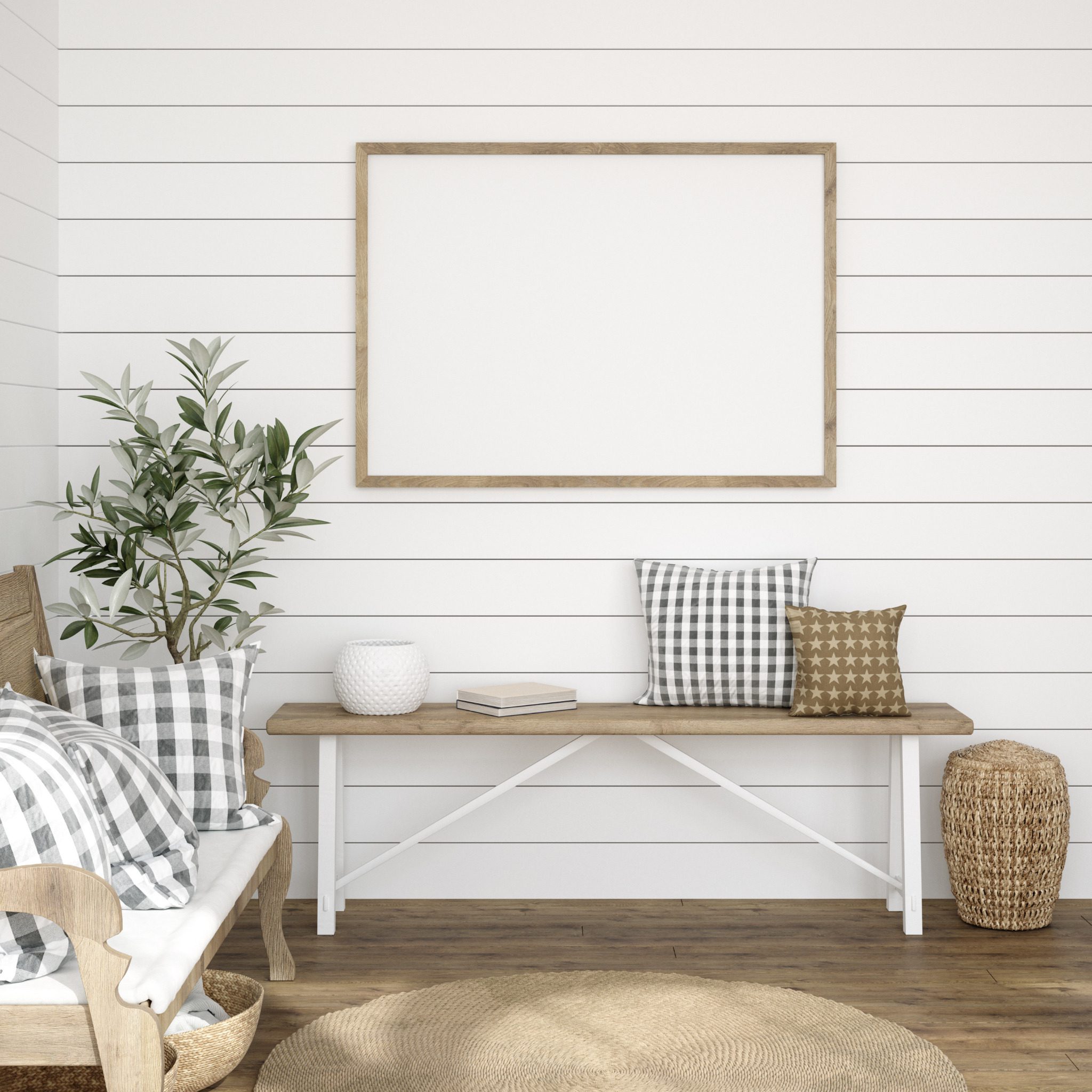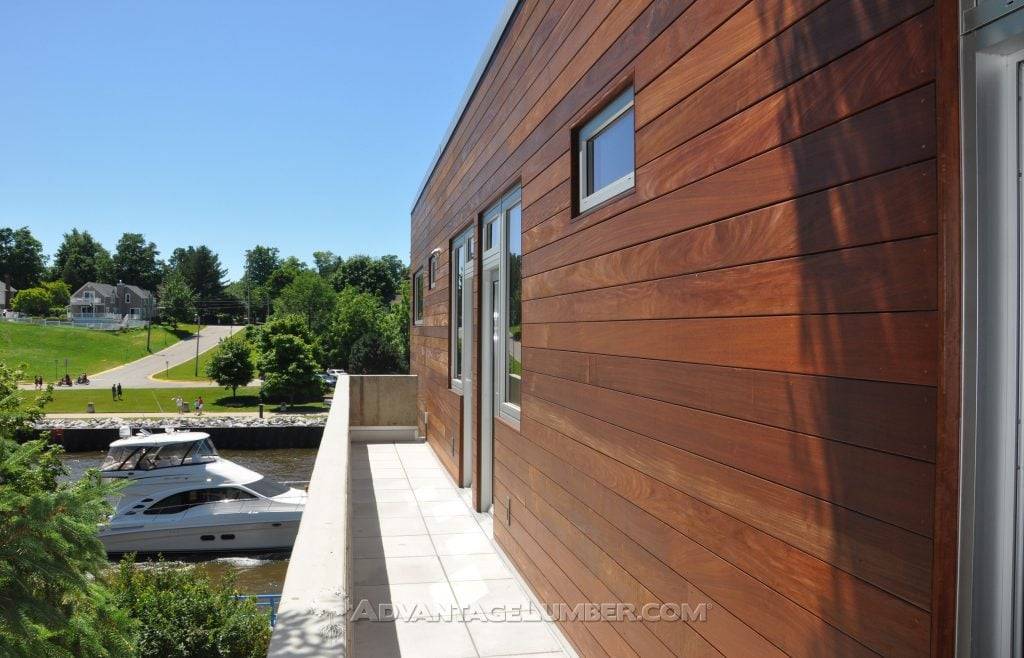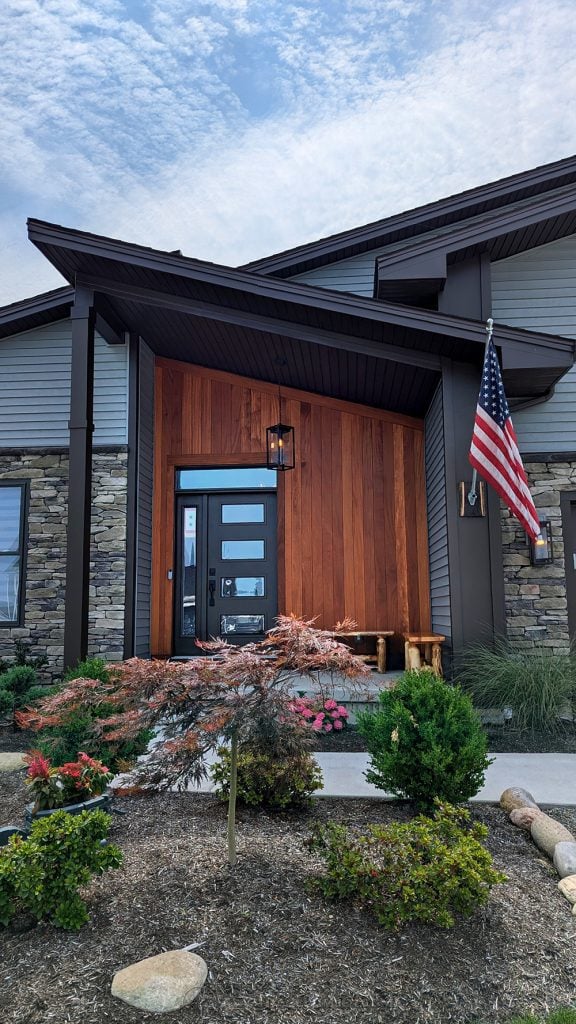Shiplap, the rustic wooden paneling that became a household name thanks to Joanna Gaines and her iconic Fixer Upper designs, has been a staple in home decor for years. The crisp, clean lines of white shiplap walls brought a farmhouse charm that captivated homeowners and designers alike.
But as design trends evolve, many are asking: Is shiplap out of style? The answer is a resounding no—shiplap is far from outdated.
Instead, it’s undergoing a vibrant transformation, with homeowners and designers embracing exotic wood species and expanding its use beyond interior accent walls to stunning outdoor applications. Let’s dive into how shiplap is staying relevant and redefining modern design.
The Joanna Gaines White Shiplap Legacy
Joanna Gaines introduced millions to shiplap through her signature farmhouse aesthetic, where white-painted shiplap became the backdrop for cozy, inviting spaces. Its simple horizontal lines and textured appeal added warmth and character to living rooms, bedrooms, and kitchens. The bright, airy look of white shiplap paired perfectly with neutral tones, distressed furniture, and vintage accents, making it a go-to choice for creating timeless interiors.
However, as design preferences shift toward more personalized and bold statements, the classic white shiplap trend is evolving. While it still holds a special place in farmhouse and coastal-inspired homes, homeowners are now experimenting with new materials and finishes to keep shiplap fresh and contemporary. This evolution doesn’t signal the end of shiplap’s reign but rather its adaptability to modern tastes.
Exotic Wood Shiplap: A Bold New Direction
One of the most exciting developments in the shiplap world is the rise of exotic hardwood species. Homeowners are moving beyond traditional pine or MDF shiplap and embracing luxurious woods like Pecky Bolivian Walnut, Teak, Tigerwood, and Ipe. These materials bring rich textures, unique grain patterns, and vibrant hues that elevate shiplap from rustic to refined.
Pecky Bolivian Walnut: Known for its distinctive, weathered texture and warm, earthy tones, this wood adds a sense of organic sophistication to any space. Its natural imperfections create a one-of-a-kind look that’s perfect for statement walls.

Teak: With its golden-brown hue and exceptional durability, teak brings a touch of elegance and is ideal for both indoor and outdoor applications.
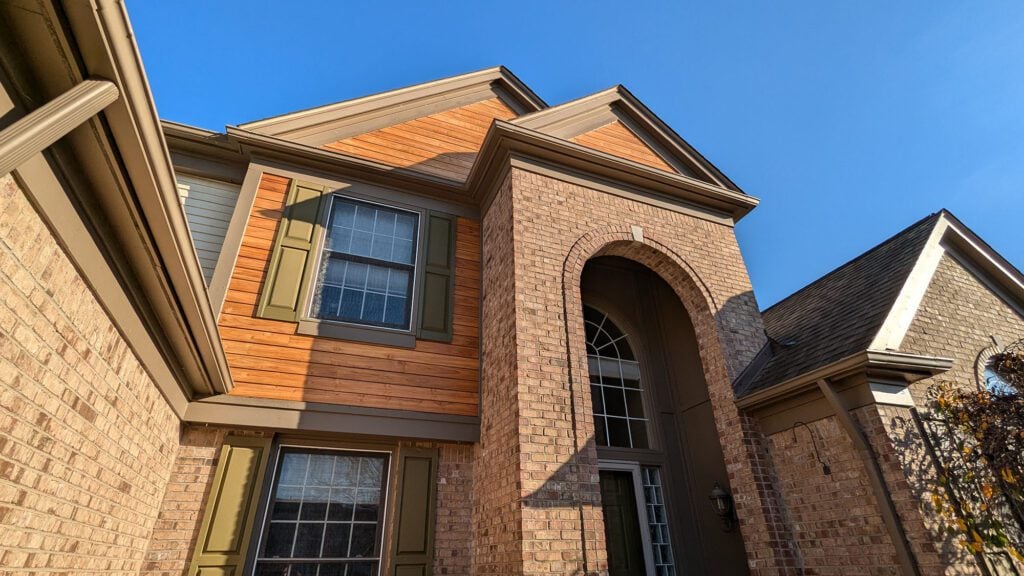
Tigerwood: This striking wood features dramatic, contrasting grain patterns that resemble tiger stripes, making it a bold choice for those who want their shiplap to stand out.
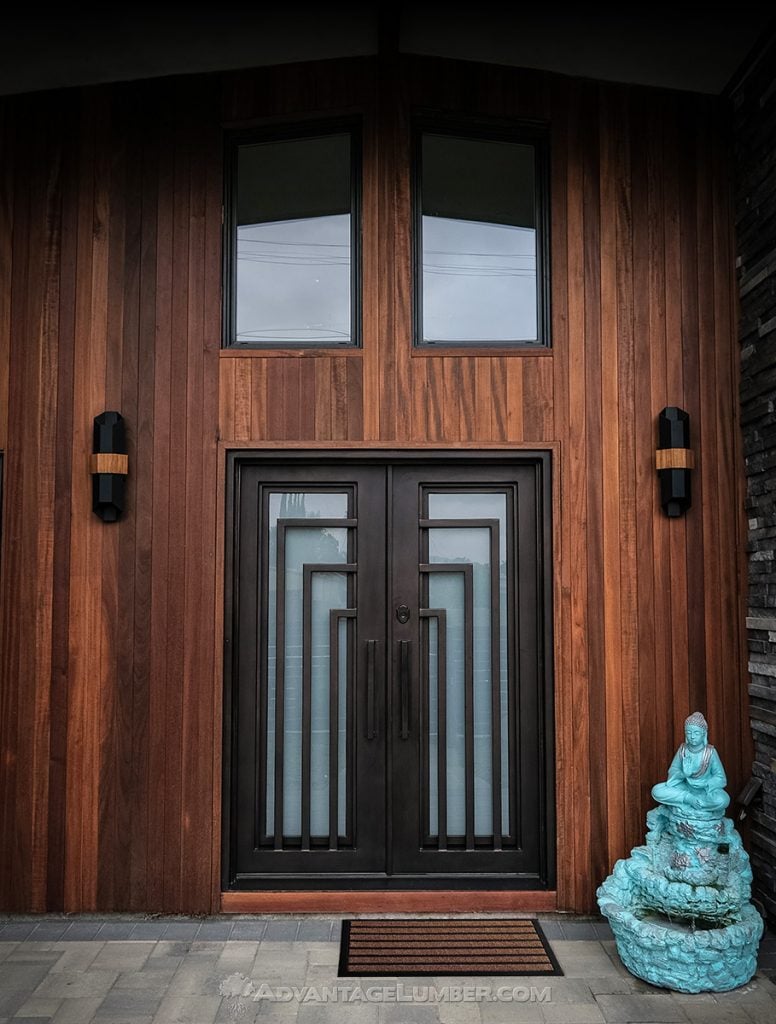
Ipe: A dense, dark hardwood with deep reddish-brown tones, Ipe is renowned for its strength and weather resistance, making it a favorite for exterior projects.
These exotic woods allow homeowners to create custom, high-end looks that reflect their unique style. Whether left natural to showcase the wood’s inherent beauty or stained for a more polished finish, exotic wood shiplap adds a layer of luxury that white-painted shiplap can’t match.
Shiplap Beyond the Interior: Outdoor Applications
Shiplap’s versatility extends far beyond interior accent walls. With the right exotic hardwood species, shiplap is making waves in outdoor design, transforming exteriors and outdoor living spaces. Durable, weather-resistant woods like Ipe, Teak, and Tigerwood are ideal for projects such as:
Siding: Exotic wood shiplap siding adds texture and warmth to a home’s exterior, creating a seamless blend of modern and natural aesthetics. Its durability ensures it can withstand harsh weather conditions while maintaining its beauty.
Fences: Shiplap-style fencing made from hardwoods like Ipe offers privacy and style, with the added benefit of low maintenance and longevity.
Lanai Ceilings: In tropical or coastal climates, exotic wood shiplap ceilings in lanais or covered patios create a luxurious, resort-like atmosphere. Teak or Pecky Bolivian Walnut can add warmth and texture overhead, enhancing the outdoor experience.
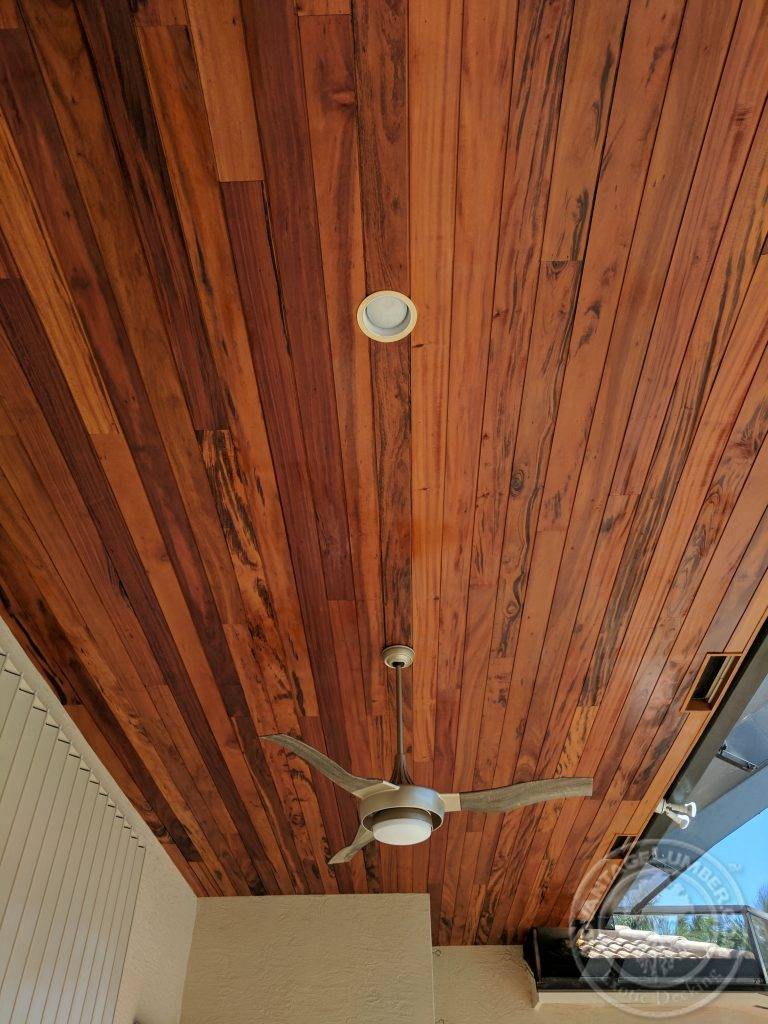
Decking and Pergolas: Shiplap-inspired designs in decking or pergola accents bring cohesion to outdoor spaces, tying together the overall aesthetic of a property.
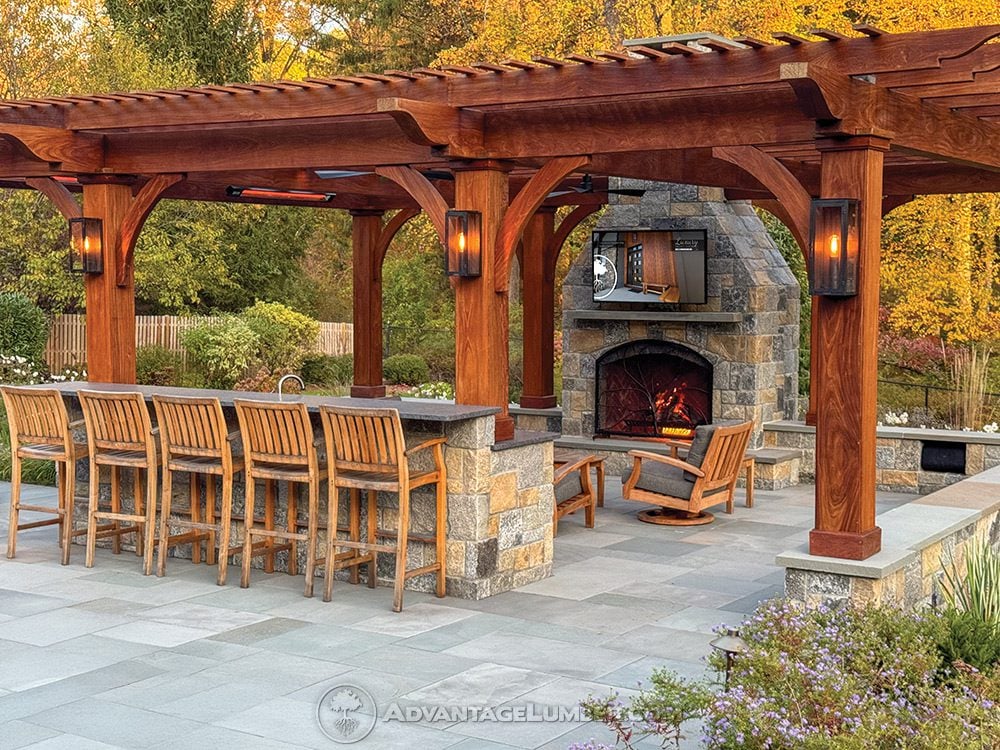
The natural resistance of exotic hardwoods to moisture, insects, and UV damage makes them perfect for these applications. Unlike traditional shiplap, which might require frequent maintenance outdoors, these premium materials are built to last, offering both beauty and functionality.
Why Shiplap Remains Timeless
Shiplap’s enduring appeal lies in its simplicity and versatility. Its clean lines and tactile quality can complement virtually any design style, from rustic to modern to coastal. While the Joanna Gaines-inspired white shiplap trend may have sparked its popularity, the shift toward exotic woods and outdoor applications proves that shiplap is anything but a passing fad. It’s a canvas for creativity, allowing homeowners to experiment with textures, colors, and settings.
Moreover, shiplap aligns with the growing demand for sustainable, high-quality materials. Exotic hardwoods, when sourced responsibly, offer eco-conscious options that combine beauty with durability. This focus on craftsmanship and longevity ensures that shiplap remains a smart investment for homeowners looking to elevate their spaces.
How to Incorporate Shiplap in 2025 and Beyond
If you’re considering shiplap for your home, here are a few tips to keep it fresh and stylish:
- Mix Materials: Pair exotic wood shiplap with other textures like stone, metal, or glass for a modern, eclectic look.
- Go Bold with Color: While natural wood tones are stunning, don’t shy away from staining shiplap in deep charcoals, navy blues, or even vibrant hues for a contemporary twist.
- Think Beyond Walls: Use shiplap on ceilings, built-in furniture, or even as a backsplash to add unexpected texture.
- Embrace the Outdoors: Incorporate durable exotic woods in your exterior design to create a cohesive indoor-outdoor flow.
- Keep It Subtle: For a minimalist approach, use shiplap sparingly as an accent in a single room or outdoor area to avoid overwhelming the space.
Conclusion: Shiplap Is Here to Stay
So, is shiplap out of style? Absolutely not. While the white-painted shiplap of Joanna Gaines’ Fixer Upper era will always have its charm, shiplap is evolving to meet the demands of modern design. The introduction of exotic wood species like Pecky Bolivian Walnut, Teak, Tigerwood, and Ipe has breathed new life into this classic material, making it a favorite for both interior and exterior projects. From accent walls to outdoor siding and lanai ceilings, shiplap’s versatility and timeless appeal ensure it remains a staple in home design. Whether you’re drawn to its rustic roots or its newfound luxury, shiplap is a trend that’s here to stay—reimagined, reinvented, and ready for the future.
